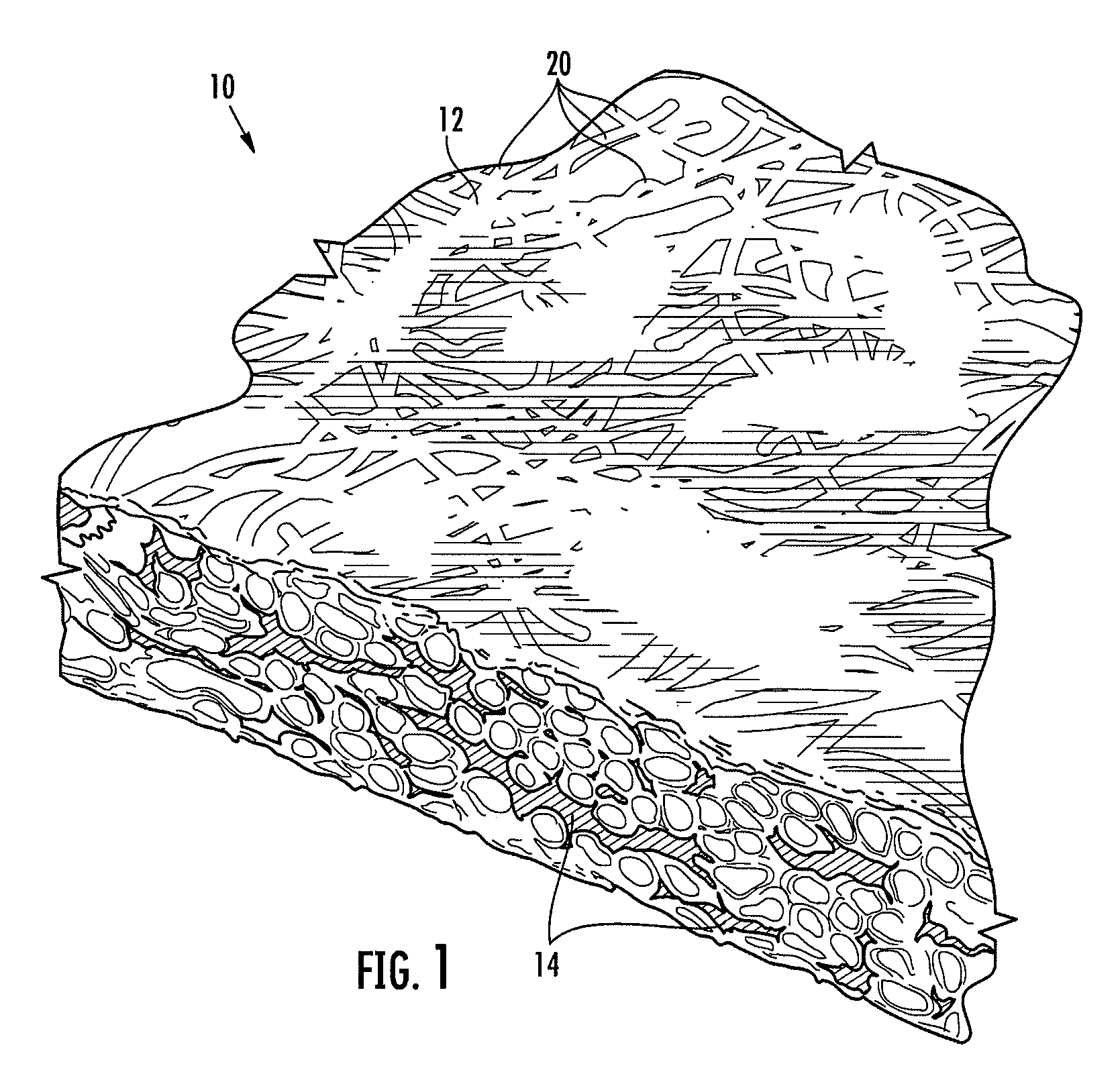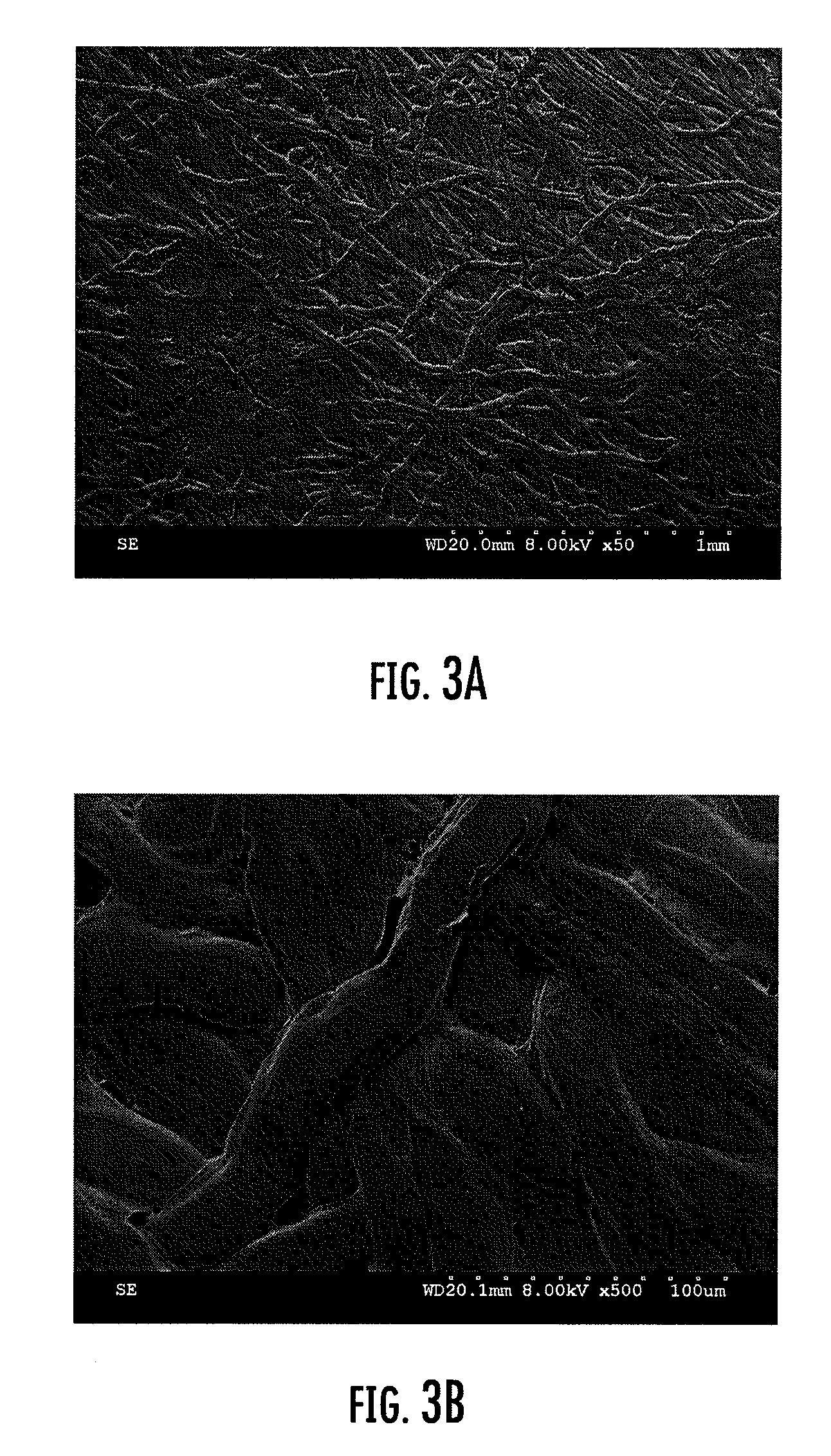Bicomponent sheet material having liquid barrier properties
a technology of bicomponents and sheets, applied in the field of nonwoven fabrics, can solve the problems of increasing the cost, easy torn by ladders during construction, and various limitations of commercially available liquid barrier materials, and achieve excellent improved liquid barrier properties and breathability, and increased opacity
- Summary
- Abstract
- Description
- Claims
- Application Information
AI Technical Summary
Benefits of technology
Problems solved by technology
Method used
Image
Examples
example 1
[0065] Fifteen different spunbond nonwoven fabrics were prepared in accordance with the invention. The fabric samples comprised substantially continuous bicomponent filaments that were thermally bonded to one another. The bicomponent filaments had a sheath / core configuration wherein the weight ratio of the sheath component to the core component varied from between 50:50 to about 30:70. The bicomponent filaments were thermally bonded together with a calender nip under a pressure of 2500 pounds per inch and a temperature of 265° F., wherein:
[0066] PE is a polyethylene having a density of 0.89 to 0.96 g / cm3 and a melt index of 6 to 40.
[0067] PP is a polypropylene having a density of about 0.90 g / cm3.
[0068] PET is a poly(ethylene terephthalate) having an intrinsic viscosity of 0.5 to 0.9.
[0069] The physical properties of the resulting nonwoven fabrics are discussed in Tables 2 and 3 below.
TABLE 1Weight RatioSheathCoreof sheathTiO2SamplePolymerPolymerto core(%)LayersSample 1PEPP50:...
example 2
[0074] In the following example, a sheet material that may be particularly useful in envelope applications was prepared. The sheet material comprised two layers of bicomponent filaments having sheath / core configuration wherein the weight ratio of the sheath component to the core component was about 70:30. The sheath component comprised polyethylene and the core comprised polypropylene, both of which are discussed above in Example 1. The bicomponent filaments were thermally bonded together with a calender nip under a pressure of 2500 pounds per inch and a temperature of 265° F. The first layer had a relatively white appearance and comprised the exterior surface of the envelope. The second layer included a carbon pigment that was incorporated into the sheath and had a relatively darker color than the first layer. The properties of the resulting fabric are summarized in Table 4 below.
TABLE 4BasisMDMDXDXDMVTRWeightGrabElongationGrabElongationHydrohead(g / 100Sample(osy)(%)(%)(lbs)(%)(cm...
PUM
| Property | Measurement | Unit |
|---|---|---|
| weight percent | aaaaa | aaaaa |
| weight percent | aaaaa | aaaaa |
| density | aaaaa | aaaaa |
Abstract
Description
Claims
Application Information
 Login to View More
Login to View More - R&D
- Intellectual Property
- Life Sciences
- Materials
- Tech Scout
- Unparalleled Data Quality
- Higher Quality Content
- 60% Fewer Hallucinations
Browse by: Latest US Patents, China's latest patents, Technical Efficacy Thesaurus, Application Domain, Technology Topic, Popular Technical Reports.
© 2025 PatSnap. All rights reserved.Legal|Privacy policy|Modern Slavery Act Transparency Statement|Sitemap|About US| Contact US: help@patsnap.com



